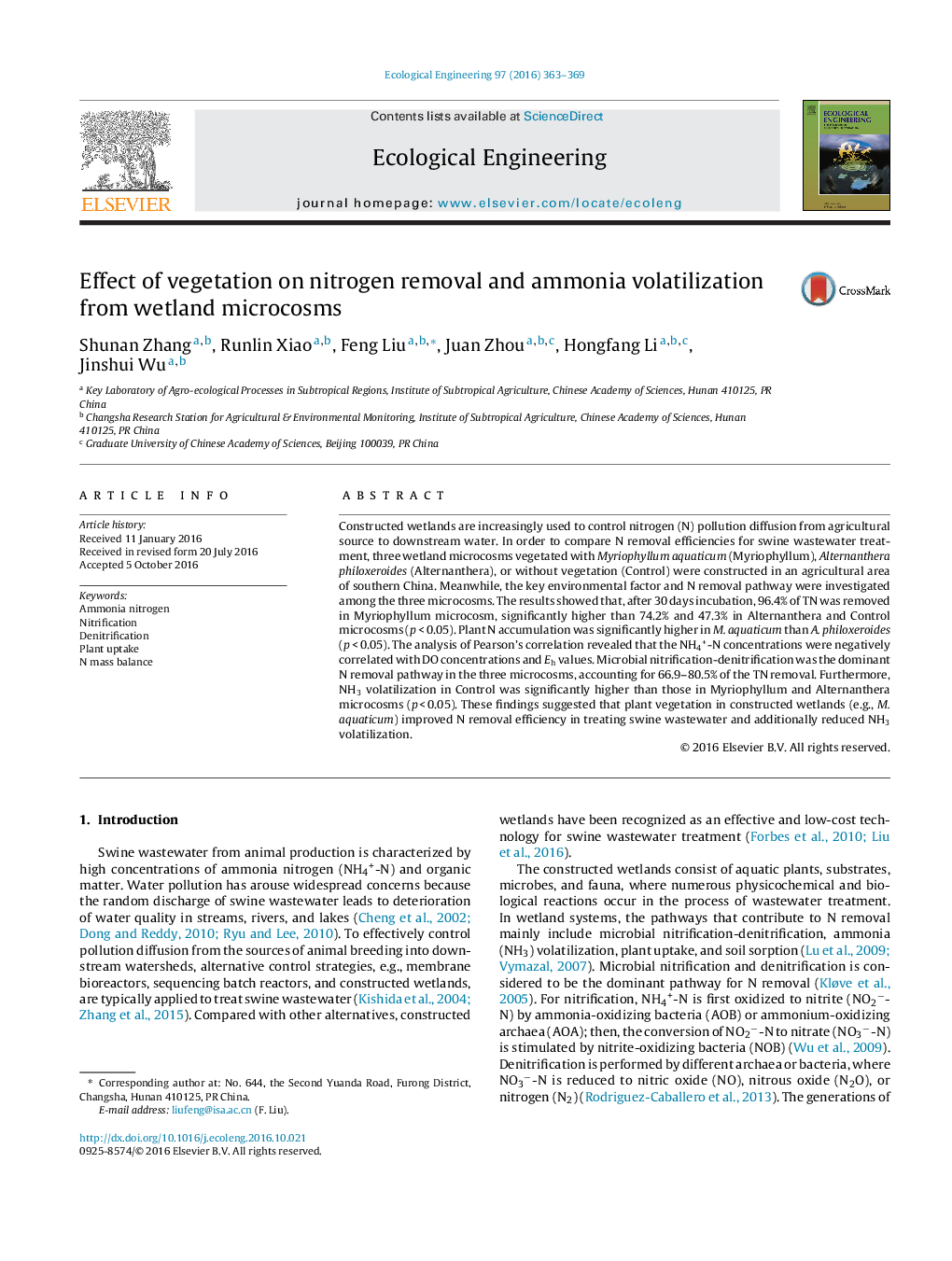| کد مقاله | کد نشریه | سال انتشار | مقاله انگلیسی | نسخه تمام متن |
|---|---|---|---|---|
| 4388396 | 1618002 | 2016 | 7 صفحه PDF | دانلود رایگان |
• High N removal rates only occurred in M. aquaticum microcosms.
• NH4+-N removal was significantly affected by DO and Eh values (p < 0.05).
• Microbial nitrification-denitrification accounted for 66.9–80.5% of the TN removal.
• NH3 volatilization was significantly higher in Control than those in vegetated microcosms (p < 0.05).
Constructed wetlands are increasingly used to control nitrogen (N) pollution diffusion from agricultural source to downstream water. In order to compare N removal efficiencies for swine wastewater treatment, three wetland microcosms vegetated with Myriophyllum aquaticum (Myriophyllum), Alternanthera philoxeroides (Alternanthera), or without vegetation (Control) were constructed in an agricultural area of southern China. Meanwhile, the key environmental factor and N removal pathway were investigated among the three microcosms. The results showed that, after 30 days incubation, 96.4% of TN was removed in Myriophyllum microcosm, significantly higher than 74.2% and 47.3% in Alternanthera and Control microcosms (p < 0.05). Plant N accumulation was significantly higher in M. aquaticum than A. philoxeroides (p < 0.05). The analysis of Pearson’s correlation revealed that the NH4+-N concentrations were negatively correlated with DO concentrations and Eh values. Microbial nitrification-denitrification was the dominant N removal pathway in the three microcosms, accounting for 66.9–80.5% of the TN removal. Furthermore, NH3 volatilization in Control was significantly higher than those in Myriophyllum and Alternanthera microcosms (p < 0.05). These findings suggested that plant vegetation in constructed wetlands (e.g., M. aquaticum) improved N removal efficiency in treating swine wastewater and additionally reduced NH3 volatilization.
Journal: Ecological Engineering - Volume 97, December 2016, Pages 363–369
